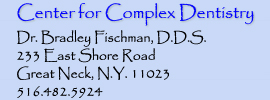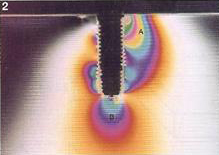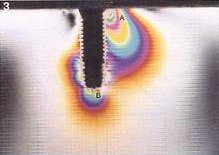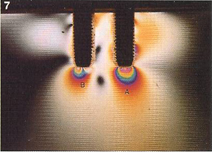 |
 |
In their paper, “In Vitro Stress Analyses of Dental Implants Supporting Screw-Retained and Cement Retained Prosthesis” (Implant Dent 1999;8:141-151) Drs. Kim, Jacobson, and Nathanson did a photoelastic and strain gauge analysis to evaluate stress transferred to implants through the following restorations: provisional cement-retained, the permanent-cement retained, and the screw-retained prosthesis. This stress was tested in three scenarios, single tooth, two unit fixed bridge, and two unit fixed bridge with a cantilever.
In all tests the permanent cemented prosthesis acted almost identically with the screw retained device. The provisionally cemented single crown transferred less stress to the implant than either the screw retained crown or the permanently cemented crown. In the case of the two unit fixed bridge (with the force placed within the bridge) there were no differences between the three different prostheses. The cantilevered prosthesis developed more stress around the apex of both implants for the screw-retained and permanently cemented bridges than the provisionally cemented restoration. In all scenarios the screw-retained and permanent-cement restorations acted in a similar manner.
The study, unfortunately did not deal with any possible alteration in the angle of force created by what appears to be a ‘compressible cement’. Previous studies have shown that lateral forces increase with the softness of the coronal material. The apparent advantage of provisionally cemented restorations may actually be a deficit if the force transmission is lateralized.
There are those of us who cement permanent restorations with temporary cements so we will have access to the implants in case of abutment loosening or peri-implant problems. In cases of marginal bone density and smaller implants, this may be another justification for the technique. Even if you desire permanent cementation, by increasing the time of provisionalization of the final prosthesis, you may obtain some of the advantages of gradual loading.
 |
 |
| Fig. 2 Isometric stress fringe patterns of a screwretained single implant crown. A, B: Stress fringe order measurement points. Fig. 3 Isometric stress fringe patterns of a permanent - cement - retained single implant crown. Fig. 4 Isometric stress fringe patterns of a prvisional - cement - retained single implant crown. |
 |
 |
 |
 |
Fig. 6 Isochromatic stress fringe patterns of a screw - retained fixed partial denture. Fig. 7 Isochromatic stress fringe patterns of a permanent - cement - retained fixed partial denture. Fig. 8 Isochromatic stress fringe patterns of a prvisional - cement - retained fixed partial denture. |
Dentures | Extreme Makeovers | Doctor's Credentials | Map & Policies | Contact Us
Home | Professional Referrals | Tidbits for Dentists | Newsletters for MDs